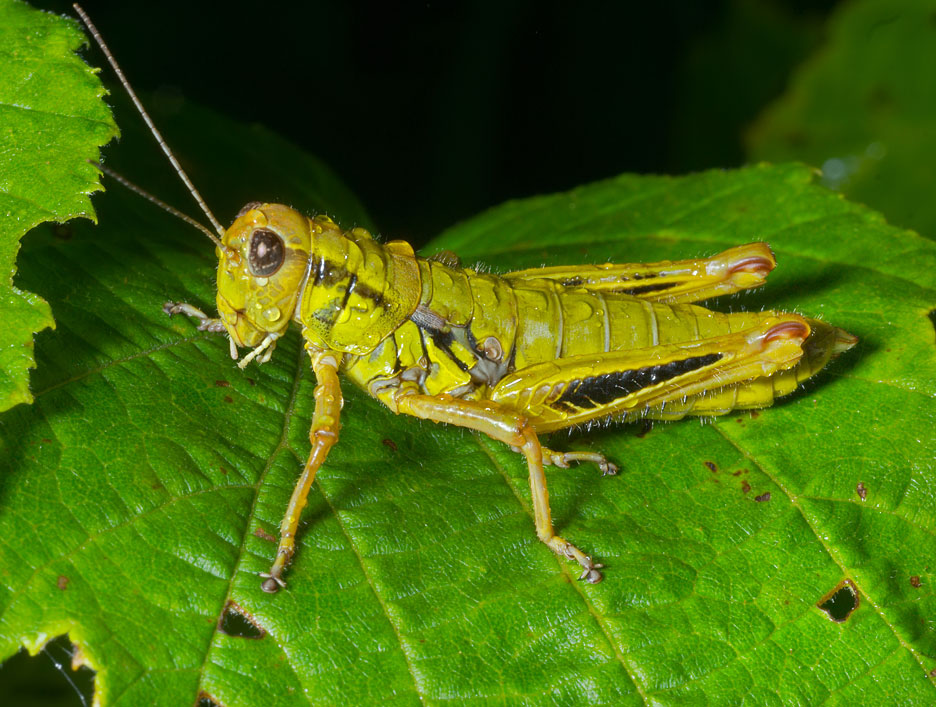Grasshoppers
Grasshoppers are occasional pests of ornamental landscapes. The differential grasshopper and four other species (red-legged, migratory, two-striped, and Packard grasshoppers) cause most of the damage seen by homeowners and urban residents in Texas. Because grasshoppers require relatively large breeding grounds in which to build large populations, most severe outbreaks occur near farmland and other less disturbed areas, such as in rural communities, farmsteads, and urban fringe areas. Although grasshopper damage is difficult to completely prevent during outbreak years, homeowners can minimize their impact through the use of barriers, insecticides and landscape plants that are less prone to damage.
Biology. Generally only one generation of grasshoppers is produced each year; however cool, dry weather during the spring months and the successive emergences of different grasshopper species can result in a seemingly endless procession of these insects throughout the summer and fall months. Grasshopper eggs are generally laid during the fall and late summer in rural, non-crop landscapes, such as along ditches, fencerows, and shelter-belts, and in weedy areas. They may also be laid in crop areas after harvest, within weedy fields, and in forage areas and pastureland. Eggs usually hatch the following spring, in June and July. The development of grasshopper nymphs to the adult stage requires 40 to 60 days or more.
Adult forms of the differential grasshopper usually appear in mid-July. The adult grasshopper is the most voracious feeder, and is able to disperse over large areas due to its strong wings. The adult grasshopper is the most likely stage to invade and damage ornamental landscapes.
Control. Because residents of urban communities generally have little control over the surrounding countryside, management options for grasshoppers in urban landscapes are limited. Homeowners can protect valuable plants through the use of our eco-friendly solution. Geotextile fabrics can be used as barriers to protect valuable vegetables and specimen ornamental plants. Also, landscape plants that are less attractive to grasshoppers can be used.
Call us! Our eco-friendly solution has been very successful in killing these unwanted chewers.
